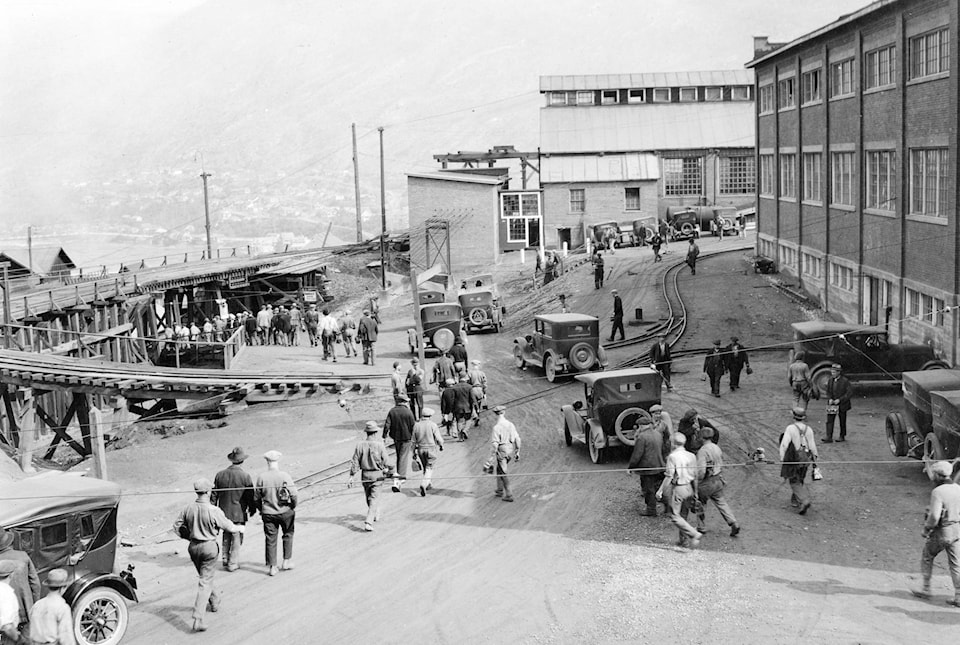There is so much to look at in this photo from 1927.
At first glance, this image from the Trail Historical Society collection shows a shift change at the Consolidated Mining and Smelting Company (now Teck), as workers leave the plant and head for the Smelter Gate.
More than that, the photo is a reflection of the working man. Working class men couldn’t afford fancy three-piece suits, nor were they practical in labor intensive jobs, like those at the smelter.
Instead they wore their own trousers of flannel or cotton, suspenders, and a long-sleeved shirt for a day of work at the plant.
The trousers were relatively narrow and straight and worn rather short so that a man’s socks often showed. It was in these years that pants also began to be worn cuffed at the bottom.
The one adornment they all have, however, is a hat. Whether it was a fedora, bowler, trilby or flat cap, wearing a hat was customary for men back then, no matter their socioeconomic status.
Then there are the cars. The automobiles likely belonged to men in higher paid management jobs as cars back then cost around $900, or almost one-third the annual income a Canadian labourer earned in the late 1920’s.
And one can only wonder if the men were thinking about going to see a picture show in downtown Trail as the city’s first moviehouse, The Rialto, went up that year. It looks like spring or summer in this image, so the movie would have been silent because the first “talkie,” the Jazz Singer, didn’t come out until October of 1927.
As far as industry in Trail, the 1920s was a period of growth and development for the Consolidated Mining and Smelting Company (CM&S) and, consequently, for the City of Trail as people flocked to the area for stable work.
Ten years previous, in 1910, CM&S purchased the Sullivan Mine near Kimberley, to prepare for the inevitable decline of resources from the Rossland mines.
The Sullivan Mine was rich in lead-zinc ores that, due to the presence of iron sulphide, was difficult to smelt.
To create a more efficient, cost-effective process, the company hired metallurgist Ralph William Diamond who conducted research and testing on the ore.
By 1920, Diamond had developed a process called differential flotation.
Zinc and lead production increased and, by 1929, CM&S was one of the world’s largest producers of the two metals. However, with this increase in production, environmental pollution became a concern.
In the late 1920s, sulphur dioxide emissions contaminated the land into Washington State.
To reduce pollution levels, CM&S explored uses for the sulphur dioxide, one of which was the production of chemical fertilizers.
By 1930, the company diversified and began to develop fertilizer under the name Elephant Brand.
- with files from Jesslyn Jarvis, collections coordinator with the Trail Museum and Archives
